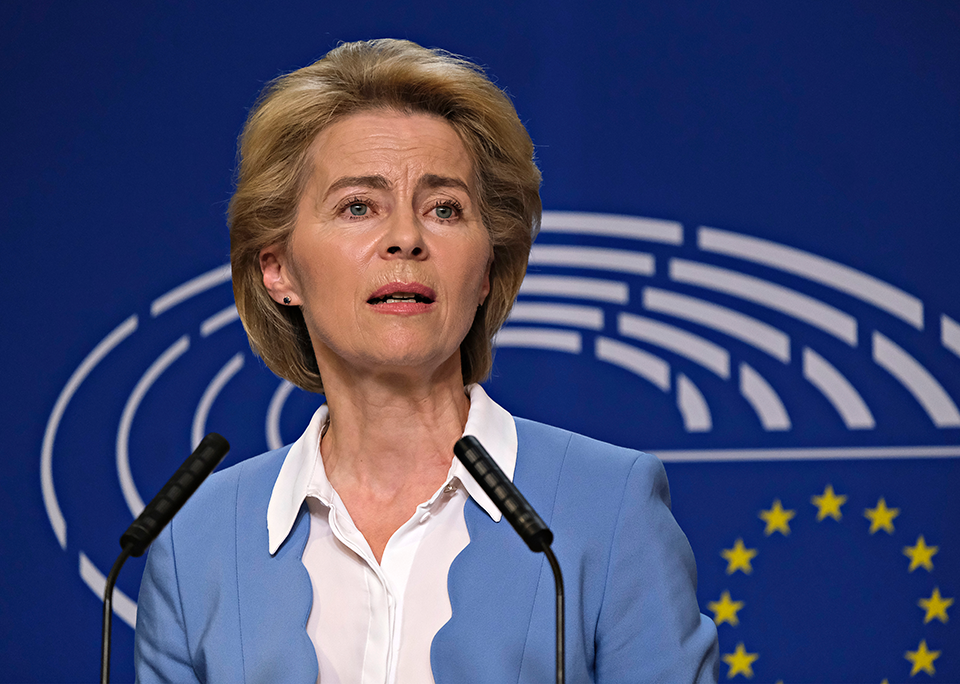Tightening of climate targets – by 55 percent by 2030
Language selection 📢
Published on: September 16, 2020 / update from: February 27, 2021 - Author: Konrad Wolfenstein
Until now, 40% was the official target for reducing greenhouse gases in the European Union by 2030. Now the announced tightening. EU Commission President Ursula von der Leyen presented the new EU climate target in her speech on the State of the European Union in Brussels.
55 percent CO2 emissions are now to be saved by 2030. This goal is “ambitious but feasible”, says Ursula von der Leyen.
It calls for the European Union's greenhouse gases to be reduced to at least 55 percent below 1990 levels by 2030. Von der Leyen suggested the drastic tightening of the EU climate target in her State of the European Union speech in Brussels.
The tightening is intended to help comply with the Paris climate protection agreement and stop the earth's dangerous overheating. However, the new target still needs to be clarified with the EU Parliament and the EU states in the next few weeks.
When it comes to climate policy in Germany, a distinction must be made between federal, state and local measures.
Germany has committed to reducing greenhouse gas emissions by 40% compared to 1990 by 2020, by 55% by 2030, by 70% by 2040 and by 80% to 95% by 2050.
However, according to all forecasts, this goal will be missed unless greater political efforts are made. In a meta-analysis of eleven studies, the Center for Solar Energy and Hydrogen Research Baden-Württemberg (2015) found that if the previous trend continued, a reduction of only 33% to 34% would be achieved by 2020. An Allianz SE report (2016) and a study by the Berlin University of Economics and Technology (2016) also confirmed that Germany will miss its climate targets. The reason is the slow expansion of renewable energies .
Can Germany still meet its climate target for 2020? The Federal Environment Agency presented its 2019 climate protection report in March. According to the preliminary balance, the Federal Republic was able to reduce its greenhouse gas emissions by around 54 million tons in 2019 - 6.3 percent compared to the previous year. The main reason for this was a decline in emissions in the energy industry due to the dismantling of coal-fired power plants and the expansion of alternative energy sources. The goal of reducing emissions this year to 751 million tons of CO² equivalents suddenly came within reach.
In order to keep global warming from exceeding 1.5 degrees, which would already have drastic effects on the environment, Germany would have to become climate neutral by 2035. The expansion of wind power has recently stalled, and the federal government is also criticized for still doing far too little to combat climate change.
This could change as a result of COVID-19 of all things: Due to the paralysis of public life during the Corona lockdown, traffic and industrial production decreased and less CO2 was released.
The energy industry continues to account for the largest share of emissions in Germany, primarily through coal combustion. Industry accounts for the second largest share, followed by the transport sector and agriculture.
Suitable for:
On December 11, 2019, the European Commission under Ursula von der Leyen presented the European Green Deal , a concept with the aim of reducing net emissions of greenhouse gases to zero in the European Union by 2050. Europe should be the first continent to become climate neutral.
Greenhouse gas emissions: The climate target is getting a little closer

You can find more infographics at Statista


























